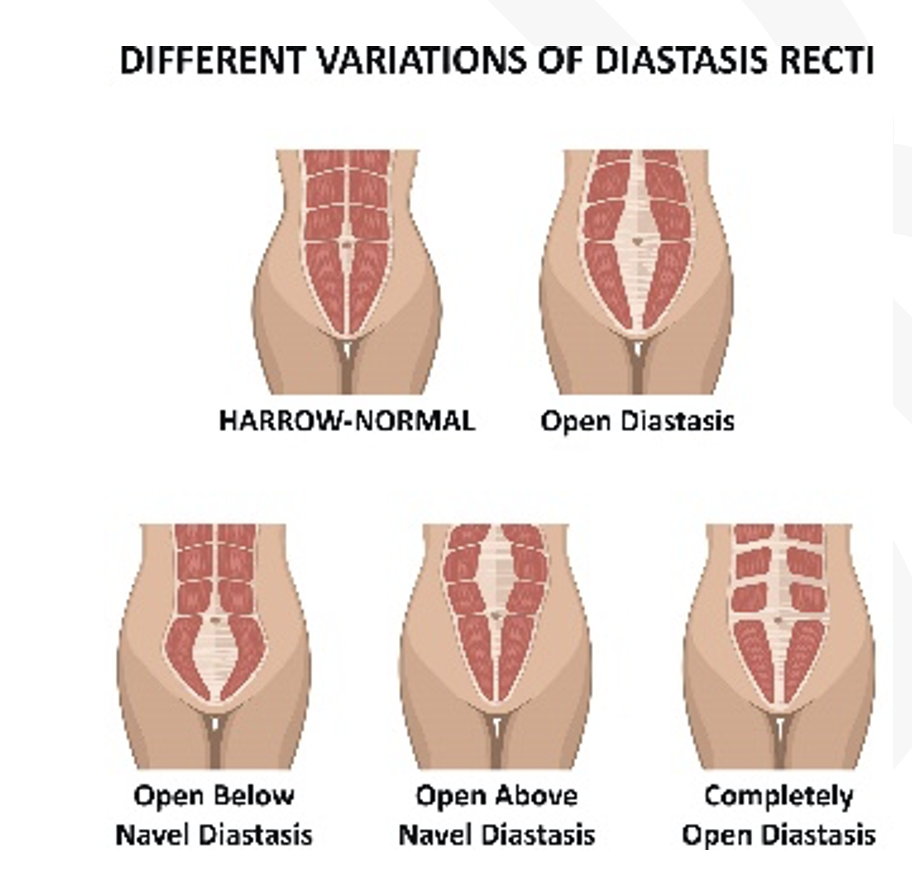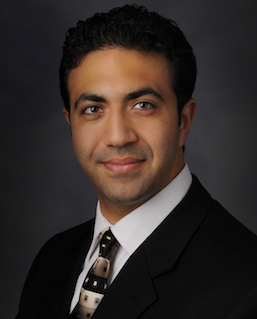About The Condition
Diastasis Recti – rectus abdominis diastasis (RAD)
About the Condition
Our surgeons are skilled in diagnosing and treating diastasis recti, a separation of abdominal muscles sometimes caused by pregnancy, obesity, prior abdominal surgery, or connective tissue disorder. Surgery can repair this condition, reducing an abdominal bulge or resulting abdominal/back pain.
Diastasis recti – or rectus abdominis diastasis (RAD) – is defined as more than a 2-cm separation of the rectus abdominis muscles, also known as the abdominal muscles. These muscles run vertically on each side of the abdomen and are separated by a band of connective tissue. When the intra-abdominal pressure is elevated, these muscles can thin due to stretching, and they can separate. Most women who have had a baby have diastasis recti, and this usually gets worse with each pregnancy.
 Symptoms
Symptoms
Significant diastasis recti and large hernias cause a decrease in abdominal wall pressure and function. This causes the weak connective tissue to support the back and organs instead of the abdominal muscles, causing symptoms such as:
- Back pain
- Poor posture
- Pelvic floor problems
- Gastrointestinal disturbances
- Constipation
- Bloating
In severe cases, patients experience significant abdominal pain and discomfort, making them unable to walk, twist, lift, hold a baby, exercise, or perform household chores.
Most patients are not looking for an abdominoplasty or cosmetic procedure. They want to regain the functionality of their abdominal wall to improve their quality of life and get back to performing their activities of daily living. Robotic surgery has opened the door for minimally invasive diastasis recti repair.
Before Surgery
Before surgery, you may be asked to:
- Stop smoking for one month prior to your surgery. Nicotine decreases blood flow, prevents healing after surgery and increases your risk of infection.
- Increase your activity. Aim for 30 minutes of walking or other aerobic activity daily to build strength.
- Improve your nutrition. Add protein supplements such as Boost or Ensure to help your body heal after surgery.
- Physical therapy prior to and after repair improves long-term outcomes.
Please ask your physician about any additional steps you should take before your surgery.
During Surgery
Specialists in General Surgery physicians have repaired diastasis recti by plicating the medial edges of the rectus abdominis muscles intra-abdominally in a minimally invasive fashion using the robotic da Vinci Surgical System and reinforcing the repair with a mesh. Several authors have questioned the durability of plication alone for diastasis recti repair and suggest that a reinforced mesh repair may be more suitable. On average, our diastasis recti patients stay in the hospital one night, experience minimal complications, and have great outcomes as they regain their abdominal wall functionality.
After Surgery
On average, our patients go home the same day as surgery, experience minimal complications, and have great outcomes as they regain their abdominal wall functionality.
- You will be encouraged to walk to prevent blood clots, muscle weakness and constipation.
- You may not be hungry at first, so return to a normal diet slowly. Start with a bland, low-fat diet for the first one or two weeks. Check with your physician about using supplements if your appetite is poor.
- You may experience constipation. If so, you may take a laxative such as Miralax or Milk of Magnesia.
- Ice may help to reduce the swelling for the first 48 to 96 hours. Then use heat to ease muscle soreness and relax tight muscles.
- You may use ibuprofen in addition to prescription pain medication to help with pain control.
- A small amount of bleeding or drainage is expected from the wound during the first one or two days.
- You may shower one or two days after surgery, but avoid baths, hot tubs, soaking or swimming for at least two weeks.
- Always talk to your surgeon about weight restrictions and return-to-work options.
- If you notice a fever greater than 101 degrees Fahrenheit or drainage from your wound, let your surgeon know.
You will be asked to see your surgeon in one to three weeks after surgery.
If you have additional questions, please contact us at 763.780.6699.


